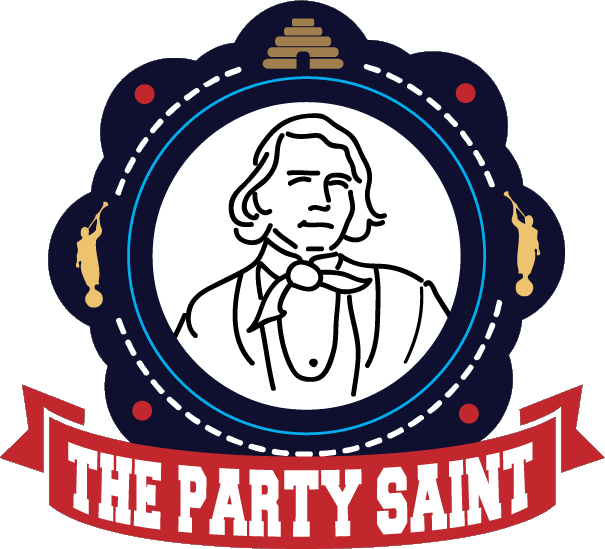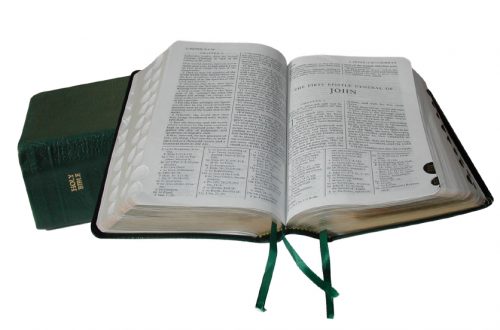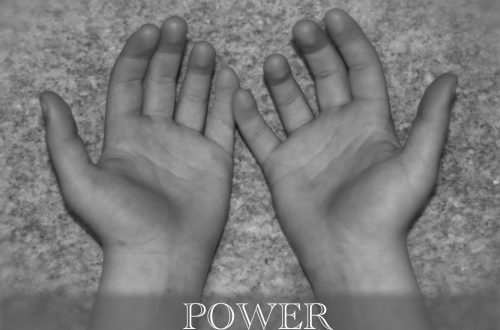Disability Awareness Activities
disAbility Awareness Activities
by Ande Haymore
Description: Having a child with a disability as part of our family
has been a great blessing to us. He has brought a spirit of love, patience, and
acceptance that wouldn’t have been there without him. With that great love and
acceptance came a clearer understanding of all of God’s children and their
importance. I know that many other families have had similar experiences when a
child with a disability has become a member of their family. Often these
families feel inspired to work in their community schools and at church to share
their understanding of the joy and love that come from serving and being served
by their “special” children. I have spoken to many parents who have
done Sharing Time lessons in Primary, workshops in Relief Society, and various
teaching activities in their local schools. All of these endeavors are geared
toward encouraging understanding and acceptance of those who are different
through disability.
Sharing Time:
My primary asked me to present a Sharing Time to help transition our child
with a disability into Primary. There are many materials to be found at the
Church’s website (www.lds.org) and by looking for “disability” in
past issues of The Friend magazine. The following is an outline of what I
presented. Following the outline is a template for a hand out to go along with
the lesson. The handout is double-sided. On the side with the scripture, I added
a picture of Jesus. I then put the handout in a “snack size” Ziplock
back with about 20 jelly beans.
Disability Awareness Sharing Time
Book Demo – put a nondescript book cover on a book of interest to children.
Write a “boring” topic on the cover. Ask the kids if they would like
to read this book now. When they don’t show much interest, show them the
interior. As them if the book looks interesting now. When they say yes, talk
about how people ban be like books – not so interesting on the outside, but
really fun on the inside – once you get to know them. (Or you could make
“dirt” out of crushed Oreos and ask if anyone would like to eat some
of your “dirt,” adapting the rest of the discussion to fit.
Define “disability” – something that someone can’t do. Kinds:
physical, behavioral, intellectual, emotional. Talk about the various kinds of
disabilities people have (about 12-15% of church members of disabilities). Lots
of people have them. I n fact, everyone has things that are hard for them to do.
Jesus spent a lot of time blessing people with disabilities. Ask the children
to tell you about some of the times that Jesus helped someone with a disability.
Blind (John 8:3-7), deaf (Mark 7:32-36), physical (Luke 5:17-225), mentally ill
(this is my own personal opinion and NOT church doctrine (Mark 5:1-6 and Mark
9:14-29), long-term illness (Mark 5:25-34 and Luke 17:12-19). There are other
stories.
Tell the children that you are now going to tell them a story about Jesus.
They will get to try out a disability while you tell the story. Divide the kids
into three groups and have them try a disability during the story and during the
questions following the story. (This is an activity from the August 1992
Friend.) One group will cover their eyes and be blind. One group will cover
their ears and be deaf. The third group will cover their mouths showing that
they are non-verbal.
Tell the story of when Jesus heals the blind man (Mark 9:3-7). You could
actually read the story from the scriptures with older children, or use pictures
from the church library or gospel art kit to illustrate the story for any age
group). Of course, the group that is blind will not be able to read and the
non-verbal group will not be able to speak. Those are some of the ideas that we
are exploring through this activity, so be sure to ask kids from these groups to
read, if you decide to read the scriptures, or to describe the pictures, if you
decide to tell the story with pictures. Use a quiet voice so that it is
difficult for the “deaf” children to hear.
Ask the children questions about the story and pictures that will be
difficult for them to answer. You could ask the “blind” group to
describe the picture. You could whisper your questions for the “deaf”
group. Questions for the “non-verbal” group should be ones that would
be difficult to answer with just a gesture or shake of the head.
Tell the children that they can return to being themselves. Ask them:
- “How did you feel while you had a disability?”
- “Were you frustrated when you couldn’t hear the story or
participate throughreading or answering questions?” - “Did you use your creativity to find new ways to learn or express
yourself?” - “Why did Jesus do so much for people with disabilities?” LOVE
Tell the children that Jesus encouraged us throughout his ministry to love
others too. Tell the story about the Good Samaritan (Luke 10:25-34). Ask the
children, “Who loved the sick man?” Discuss with the children how the
good Samaritan showed his love.
Tell the children that friendship with a person with a disability is a
special opportunity to help/love others. Discuss ways to show love.
- 1. Help people feel loved and accepted through friendship. What can
keep us from loving? Let the children think about this question a little bit.
They may not want to answer, but they will have ideas in their own minds about
what keeps them personally from loving and accepting others. Point out that it
is often fear of the person because the person is different from themselves.
Tell them that they need not fear people with disabilities. They are sons and
daughters of God – just like themselves.
Ask the children what they like to do with their friends. Give them time to
suggest many things. Now ask them what activities could they enjoy with a
friend who is deaf?. What about a friend who was blind? What activities would
still be fun with a friend who was non-verbal? This discussion opens up an
opportunity for you to discuss ways they could be a friend to YOUR child. Help
them see how they can be a friend to a child with your child’s disability in
a generic way first. Later in the lesson discuss ways to be a friend to your
child specifically.
The children will discover that they are more alike than different and can
enjoy lots of activities with children with disabilities. Ask the children how
they can help a child with a disability at church.
2. Recognize talents. Everyone has talents – mentioned in the
scriptures that everyone has a talent. Stress that it is our job to recognize
talents in the people around us and help them to use them.
In our primary some people have disabilities. Show a picture of your child
with a disability or ask them to join you at the front of the room. Tell the
primary about your child’s disability, or have your child describe his own
disability. Answer any questions the children may have.
Tell how the disability makes the child different from the rest of the
primary.
Tell about how your child is the same as the rest of the primary.
Tell about how the child still needs a friend. Ask the group how they can
be a friend to your child every day and at church. Suggest ways that are
important to you.
Tell them about your child’s talents. Introduce the jelly bean handout
and discuss it briefly.
I gave the kids some Jelly Belly jelly beans with the handout (about 20
each), and I talked about the recipes for jelly beans (eat a cream soda jelly
bean with a rootbeer one for a rootbeer float) that come in the packages. Then I
related those recipes to Families and Wards. Heavenly Father knows the best
recipes for putting people together into families so that they could help each
other the most. He knows about Ward Families too. It is our job to help one
another. Jesus knows that we can and expects us to do so.
Bulletin Board:
During March, National Disability Month, I like to put up a bulletin board at
my local school. I think a bulletin board is appropriate at any level,
elementary through high school. Ask your principal for permission to do so. The
title of the bulletin board I use is “If you have a disability… You’re
in Good Company!” The title is in the middle of the bulletin board and is
surrounded by short, one-page biographies of famous people with disabilities.
(Use about a 50-point font so that the bulleting board is readable from a
distance.) There is a picture of the celebrity that accompanies each biography
Each biography and associated picture are mounted on a piece of colored paper
which extends beyond the biography and picture to give the grouping a colorful
border. You could use a different color for each biography to add interest to
the display.
Here is an example of a bulletin board biography:
- Steven Hawking
Probably one of the greatest astronomical physicists of modern times,
Hawking has developed several theories about the nature and origins of our
universe and written the best-selling book Black Holes and Baby Universes. He
also uses a wheelchair to get around and a voice synthesizer to speak.
I found that if I used a 49-point font with line spacing at 0.8 and margins
of 0.5 inches on all sides, that I could fit this biography on one 8 ½” x
11″ sheet of paper.
All of the biographies that I use were extracted from books that I checked
out from the library. Most came from a series of books called Great Achievers:
Lives of the Physically Challenged. The pictures that I use are photocopies of
pictures from the books.
Sculpting Activity:
Many activities designed to encourage acceptance and inclusion of people with
disabilities involve trying out a disability. Trying out a disability, when
accompanied by a class discussion of the experience, can be a terrific way to
encourage positive feelings for people with disabilities. I have used a
sculpting activity to try out a disability because it is so fun and allows some
time for artistic expression. This activity will take about 45-60 minutes.
Materials needed:
- 1 fist size ball of salt dough (recipe included)
1 paper plate
sculpting tools (Popsicle sticks, toothpicks, etc.)
Blindfolds for half the students
Begin by discussing with the students how to sculpt. Demonstrate how they
could use the various implements to crate desired effects. After the discussion
tell them that they will now have the opportunity to sculpt ( I like to ask the
students to sculpt a person’s face–older students could be asked to add
expression to the face). As they sculpt, they will need to follow some rules.
Half of them will sculpt with their eyes closed. The other half will sculpt
using only one hand. Divide the class and blindfold half of them. Have the other
half sit on one of their hands or put one hand in their pocket. Give them the
materials and let them begin! Allow 10-20 minutes for sculpting depending on
interest and how much time you have.
When you are done, have the students stay in character (retain their
disabilities) for some questions.
- What do you think of your sculpture?
- Did you feel bad about not being able to see/use one of your hands?
- How did your feelings change as you sculpted?
Now, allow them to return to themselves and ask additional questions.
- What was our experience with sculpting like?
- Did you surprise yourself?
- Were you able to do something that you didn’t think you were able to do?
- What did you accomplish? Be sure to point out that all of the sculptures are different–yet wonderful.
Stress with the class that they were presented with a problem – a
disability – and they had to use their creativity to discover new ways to
sculpt. People with permanent disabilities can do lots of things – just in
different ways than people without a similar disability. They have used their
own creativity to find new ways to do everyday activities. There are lots of
ways to do the same things. All ways are okay.
Salt Dough Recipe:
- 2 cups water
2 Tbsp. Oil
2 cups flour
1 cup salt
1 Tbsp. Cream of tartar
food coloring or 2 pkgs unsweetened drink mix (such as Kool-Aid)
Combine all ingredients in a large skillet. Cook and stir on medium heat
until the dough forms a ball of clay consistency. Transfer cooked dough to a
clean cutting board or counter top. Allow to cool for a few minutes, and then
knead. If you use the drink mix instead of food coloring, the dough has a great
smell, as well as a great color. Makes enough for 8-9 students to use for
sculpting.
Silver Ribbon Week:
The symbol for Disability Awareness is the silver ribbon. During March, I
like to give the students at my local school a silver ribbon to wear. You can
buy silver ribbon at any craft store. (I like to plan far in advance for this
activity and use coupons to get the ribbon more cheaply.) For each student I
plan on six inches of ribbon, and I use either tape or a small safety pin to
attach it.
This activity can be done on a school-wide basis for not too much money. To
help pay for the ribbon and pins/tape, you may want to talk to your school’s
parent association. I have found that they will generally like the idea of
encouraging the acceptance of others and will be willing to help fund this
activity.
To go along with this activity, I have a workbook that I designed to broaden
the experience. Templates for the workbook are found at this web site. It uses
two pieces of paper and has materials printed on both sides of each piece of
paper. To make the workbook, the two pages are folded in half and stapled to
make a book. The front of the manual has the title. The inside cover has the
State Family Council contact information. Opposite the contact information are
suggested activities for each school day. The middle of the book are the Braille
and Sign Language activities. Next is the “When You Meet an Individual With
a Disability” page, followed by the salt dough recipe. On the back cover is
the friendship pledge. I use the silver ribbon as the prize for signing the
pledge.
Your local school’s parent association may be willing to copy the workbook
for you. Ask them at the beginning of the school year if you would like to them
to do so, so they can plan to fund it.
Peer Tutors:
Many schools where students with disabilities are in cluster groups or are
generally mainstreamed already and have peer tutoring groups. If your school
doesn’t, I highly recommend that you work with your teacher and principal to
start such a program. Peer tutors are students of about the same age who spend a
portion of their school day, perhaps once or twice a week for an hour, helping
students with disabilities with their school work. When students with and
without disabilities interact, both are blessed. Some schools use their top
students as tutors, while others encourage students who may be struggling either
socially or academically, to tutor those students with even greater needs. The
experience can be so positive!



